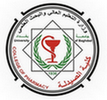The Faculty of Pharmacy discussed the master’s thesis entitled “Phytochemical investigation of Iraqi Cicer arietinum of whole plant extract” by Rawnaq Jamal Madhloom in the Pharmacognosy and Medicinal Plants Department and her supervisor, Assist. Prof. Dr. Mohammed Kamil Hadi.
The thesis aimed to focus on phytochemical investigation of the Iraqi Cicer arietinum whole plant and the analysis of chemical constituents according to what the study included:
- The dried sample (50 gm) was extracted in a Soxhlet extractor with 500 ml of 90% methanol and then fractionated using hexane, chloroform, ethyl acetate, and n-butanol in different polarities and fractionations of different active constituents from the plant.
- The numerous active components in the Cicer arietinum fractions were identified in preliminary fashion using several chemical tests and gas chromatography/mass spectrometry (GC/MS). These identifications were supported by thin-layer chromatography (TLC) with various solvent systems and ultraviolet light at (254 and 365) nm and with high-performance liquid chromatography (HPLC), high-performance-thin-layer chromatography (HPTLC). Preparative-layer chromatography (PLC) and high-performance liquid chromatography were used to complete the isolation process (HPLC).
- Preliminary chemical analysis of the extracted materials revealed the presence of steroids, terpenoids, flavonoids, tannins, and coumarins. The phytoconstituents in the hexane fraction were found using gas chromatography/mass spectrometry (GC/MS).
Results from thin-layer chromatography (TLC) and high-performance liquid chromatography (HPLC) showed that the plant’s n-butanol fraction included rutin and catechine, while the hexane and chloroform fractions contained p-coumaric acid, caffeic acid, and gallic acid. From the complete plant of the Iraqi Cicer arietinum, six active components have been identified. Analytical TLC, analytical HPLC, Fourier-transform infrared spectroscopy (FTIR), ultraviolet (UV), and a high-performance compact mass spectrometer were used to determine the structure of the separated chemicals (CMS). It was determined that the separated substances were lupeol, p-coumaric acid, caffeic acid, gallic acid, rutin, and catechine.






